
From Chaos to Order: The Art of Enterprise Project Management
In every business, a chaotic workplace can bring down even the best project. But if you adopt Enterprise Project Management (or EPM) processes, you can transform your business and leverage effective project management techniques to propel growth.
Executive Summary:
In every business, a chaotic workplace can bring down even the best project. But if you adopt Enterprise Project Management (or EPM) processes, you can transform your business and leverage effective project management techniques to propel growth.
Consider a multinational corporation launching a game-changing product. Without EPM, this endeavor could resemble a frenzied circus act, with conflicting schedules, misaligned objectives, and potential chaos lurking at every corner. However, EPM steps in as the seasoned ringmaster, aligning diverse departments, integrating workflows, and ensuring a flawless performance that captivates the market. Neat right?
So join us on an enlightening journey as we explore the depths of EPM and its profound impact on business success – including how you can incorporate it.
What is Enterprise Project Management
Enterprise Project Management (EPM) is a comprehensive approach to managing projects within an organization that aligns project activities with the strategic company goals and objectives. At its core, EPM is the art of orchestrating projects with a holistic approach, encompassing planning, execution, and control on an enterprise-wide scale.
In EPM, projects are strategic initiatives that contribute to the organization’s success rather than isolated endeavors. It also involves a top-down approach, where the organization’s strategic direction drives project selection, prioritization, and resource allocation. EPM emphasizes integrating project management practices across all departments, fostering collaboration, communication, and synergy among project teams.
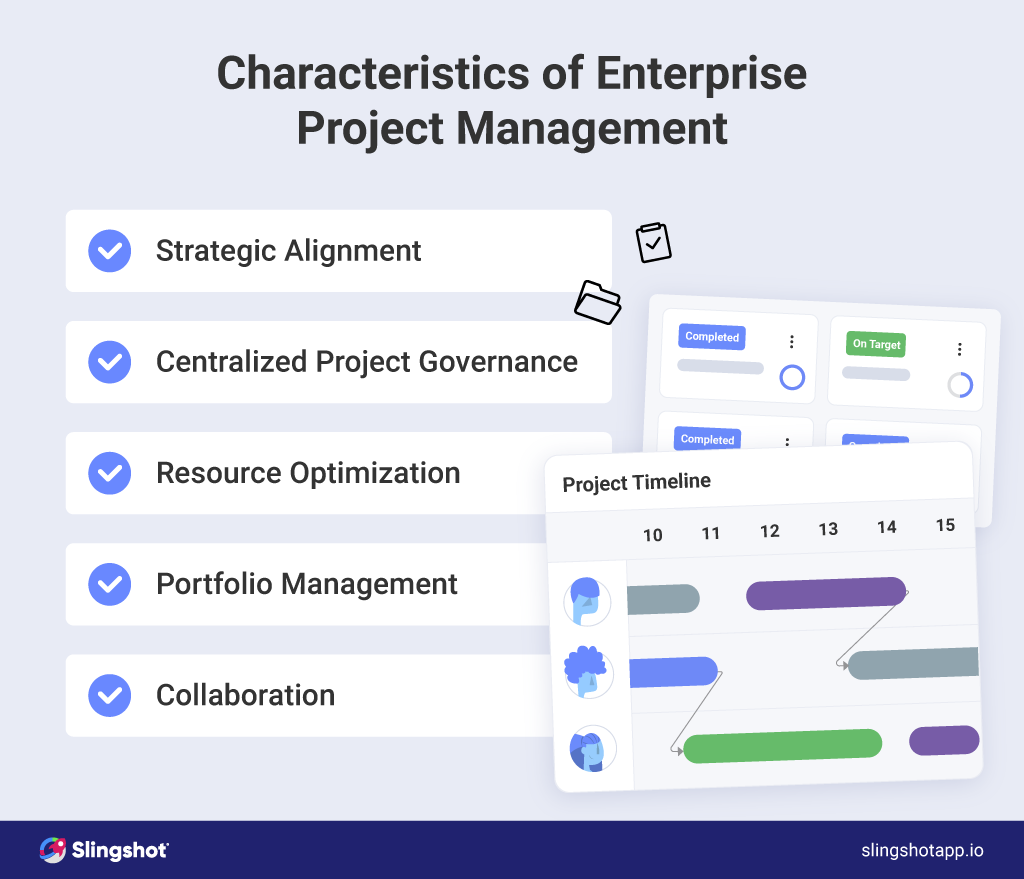
The key characteristics of Enterprise Project Management include:
- Strategic Alignment – project objectives are directly linked to the organization’s strategic goals and vision, and projects are selected and prioritized based on their potential to deliver value.
- Centralized Project Governance – a centralized governance structure to oversee project management activities across the organization
- Resource Optimization – optimizing the allocation and utilization of resources, including human resources, financial resources, and materials
- Portfolio Management – the selection, prioritization, and management of a portfolio of projects to achieve strategic objectives, assessing the potential risks, benefits, and resource requirements of projects, and making informed decisions.
- Collaboration– promoting collaboration and effective communication among project teams, stakeholders, and organizational leadership, constantly sharing information, knowledge, and best practices to facilitate decision-making, problem-solving, and successful project outcomes.
By adopting Enterprise Project Management, organizations can achieve better project outcomes, improve project success rates, enhance efficiency, and increase their ability to adapt to changing market conditions. EPM provides a structured and integrated approach to project management that aligns projects with organizational strategy, enabling businesses to deliver projects that bring value and drive long-term success.
Benefits of Enterprise Project Management
Adopting EPM can have numerous perks for your organization, especially if you are a well-established business with many departments and teams. Here are some of the benefits you can expect when implementing EPM practices.
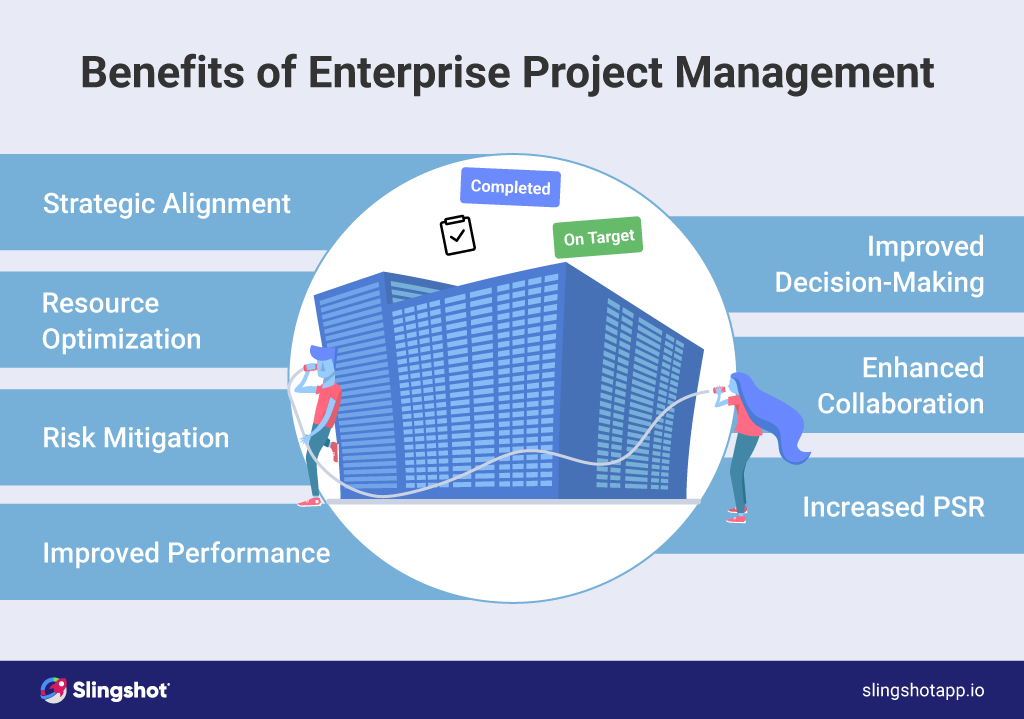
Strategic Alignment
EPM ensures that all projects are aligned with the overall organizational goals and strategic objectives, increasing the likelihood of achieving desired outcomes.
Improved Decision-Making
With EPM, you get valuable insights that help you make informed choices for priorities, resource allocation, and project selection.
Resource Optimization
Allocation and utilization of resources is optimized easily when you employ EPM – improving resource efficiency and minimizing resource conflicts.
Enhanced Collaboration
EPM fosters a culture of transparency, knowledge, and teamwork, leading to improved project outcomes and stakeholder satisfaction.
Risk Mitigation
EPM is all about proactive risk management, enabling organizations to identify, assess and mitigate risks early in the project lifecycle, to reduce schedule delays, cost overruns and other disruptions.
Increased Project Success Rate
Aligning projects with strategic objectives leads to improved decision-making and enahnced project success rates, delivering projects on time and within budgets.
Improved Organizational Performance
EPM enables organizations to execute projects more effectively, leading to better adaptation to ever-changing market conditions and staying competitive in a dynamic business environment.
So, employing EPM can lead your organization right to success – increasing efficiency, strategic alignment and competitiveness with one swift swoop.
Enterprise vs. Traditional Project Management: What’s the Difference
We know that in the realm of project management, two distinct approaches vie for attention: Enterprise Project Management (EPM) and Traditional Project Management. While they both share the common goal of successful project delivery, their methodologies, scope, and strategic implications set them apart.
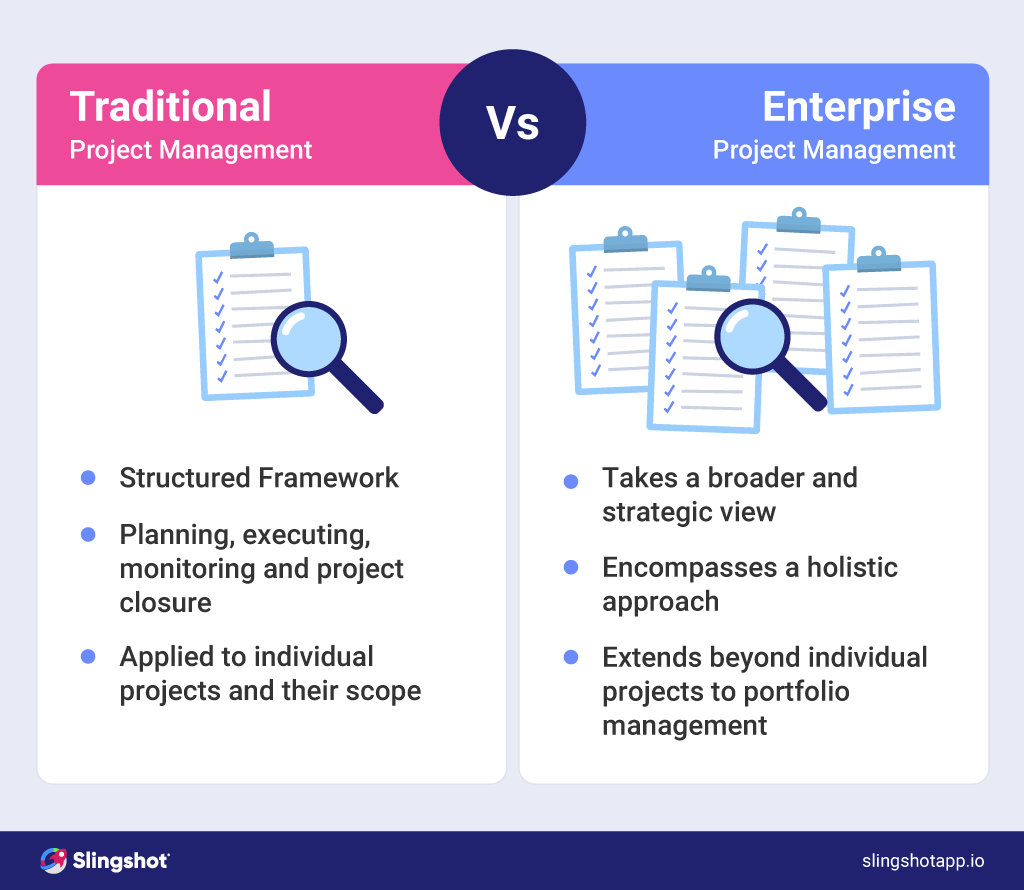
Traditional Project Management follows a linear and sequential approach to project execution. That means:
- It involves a structured framework that begins with project initiation
- That stage is followed by planning, execution, monitoring, and finally, project closure
- It is typically applied to individual projects and focuses primarily on delivering the project’s defined scope, meeting project milestones, and adhering to predetermined timelines and budgets.
On the other hand, Enterprise Project Management (EPM):
- Takes a broader, more strategic view of project management
- Encompasses a holistic approach that considers the alignment of projects with the overall goals and objectives of the organization
- Extends beyond individual projects and emphasizes portfolio management, resource optimization, risk mitigation, and strategic decision-making.
Another significant distinction between the two approaches lies in their scope. Traditional Project Management primarily focuses on the execution of a single project, ensuring its success within the defined constraints. It is suitable for smaller projects or projects with well-defined scopes and limited interdependencies. In contrast, EPM encompasses a portfolio of projects and looks at the big picture, considering how projects align with the organization’s strategic objectives, resource allocation, and overall business impact.
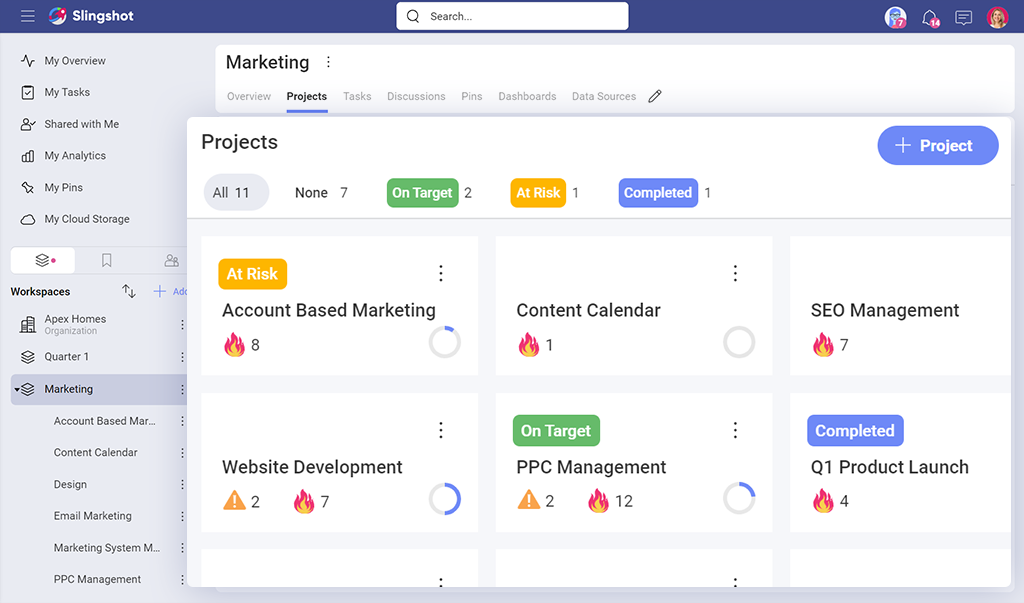
Risk management is also approached differently in EPM compared to Traditional Project Management. Traditional Project Management focuses on project-specific risks, identifying and mitigating them within the project’s boundaries. EPM, on the other hand, takes a broader perspective, considering the risks and opportunities associated with the entire project portfolio. By assessing and addressing risks at the portfolio level, EPM enables organizations to make informed decisions that mitigate risks and maximize value across projects.
Lastly, strategic alignment is a key distinction between EPM and Traditional Project Management. While Traditional Project Management focuses primarily on delivering individual projects, EPM ensures that projects are strategically aligned with the organization’s overall goals and objectives and how they contribute to the organization’s long-term vision.
What is Enterprise Project Management Software
EPM software refers to a type of software solution designed to support and streamline project management activities within large organizations or enterprises. This tool usually provides a comprehensive set of features that facilitate planning, organizing, and executing projects across multiple departments and teams.
Enterprise project management software typically offers functionalities such as:
- Project planning
- Scheduling
- Resource allocation
- Budgeting
- Collaboration
- Reporting.
Using an EPM tool enables project managers and team members to track project progress, manage tasks and milestones, allocate resources effectively, and monitor budgets and expenses. Not to mention – having great collaboration and transparency among all teams.
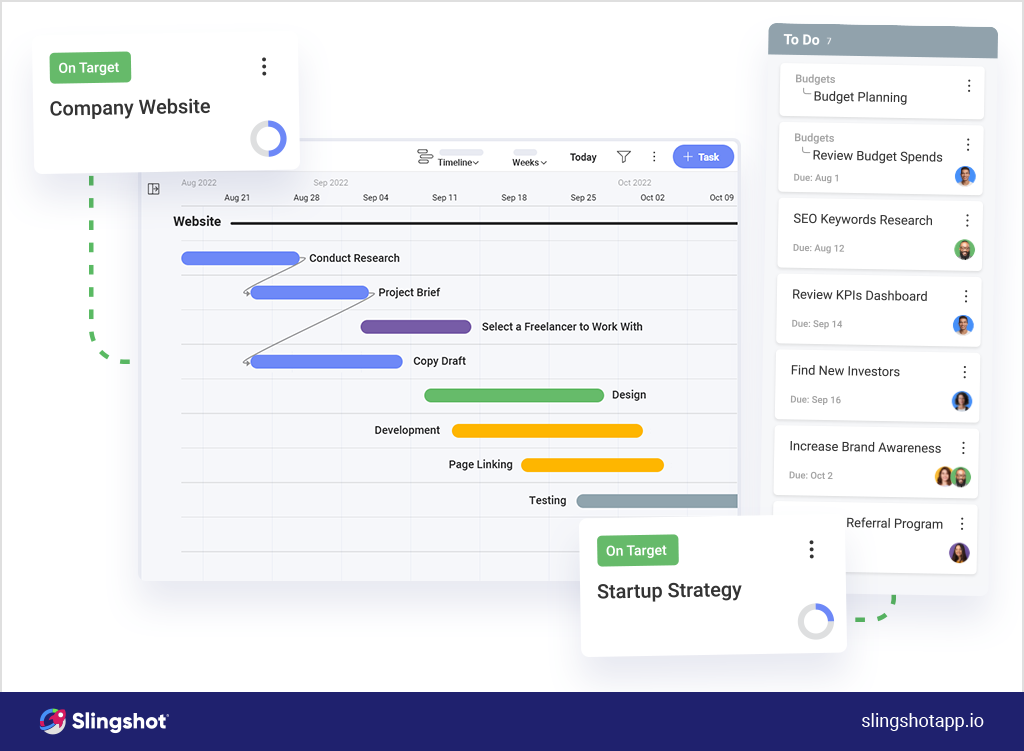
Key features commonly found in enterprise project management software include:
- Project planning – defining project goals, creating plans, and establishing task dependencies.
- Resource management – allocate resources, manage team availability, and balance workloads.
- Collaboration – team discussions, document sharing, and real-time communication to foster collaboration and information exchange.
- Time and expense tracking – monitor time spent on tasks, track project-related expenses.
- Reporting and analytics – visualizing data in dashboards to better analyze project performance, identify bottlenecks, and make data-driven decisions.
Enterprise project management software helps organizations improve project outcomes by enhancing collaboration, streamlining processes, increasing visibility, and promoting effective resource allocation – ultimately leading to improved project delivery and overall organizational success.
How to Implement Enterprise Project Management
Here are several critical steps involved in implementing enterprise project management. The framework to guide you through the process is:
Define the Project Management Methodology
Select a project management methodology that aligns with your organization’s needs and goals. Standard methods include Agile, Waterfall, or a hybrid approach.
Set up Project Management Infrastructure
Identify and implement the necessary tools and systems to support enterprise project management. This includes selecting a software solution that aligns with your requirements. Consider factors such as scalability, integration capabilities, user-friendliness, and good data analytics features.
Establish Roles
Define the project governance structure by determining the organization’s roles, responsibilities, and decision-making processes. Identify key stakeholders and establish communication channels to ensure effective collaboration.
Monitor and Refine
Continuously monitor project progress, resource utilization, and overall project performance. Regularly review project metrics, such as schedule adherence, budget variance, and quality metrics.
Foster a Culture of Collaboration and Learning
Encourage a culture of collaboration, knowledge sharing, and continuous improvement within the organization. Promote cross-functional collaboration, facilitate regular project status meetings, and provide platforms for sharing best practices and lessons learned.
Remember that implementing enterprise project management is an ongoing effort that requires commitment and support from the organization’s leadership. It’s essential to have a clear vision, effective communication, and continuous monitoring to ensure successful implementation and derive maximum benefits from project management practices.
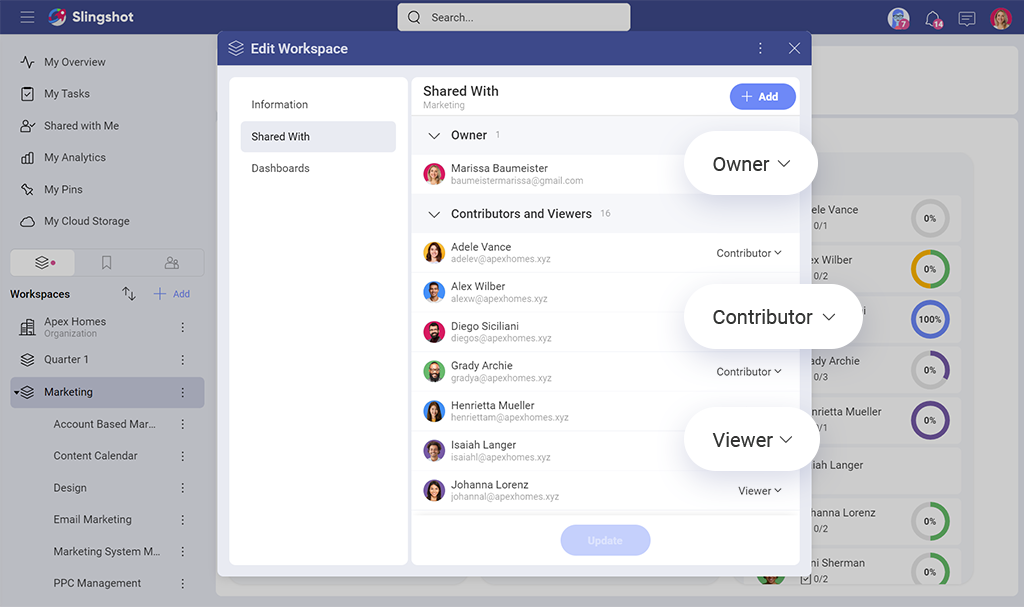
Bring Your Project Management to the Enterprise Level With Slingshot
When building an effective enterprise project management process, the best way to save time is to keep your daily workflows, team effort, data, and collaboration in one app. That way, everything runs smoothly, and you can create the best processes. Slingshot simplifies building your EPM by incorporating modern project and task management, file management, chat, and data analytics all within one app.
Slingshot is an all-in-one app that provides:
- In-context, seamless collaboration
- Collaboration between teams from different departments and locations to work together
- Transparency to project status with due dates and dependencies in your projects.
- Data as the central point for all decisions with real-time insights you can analyze, collaborate, and act on.
Slingshot can streamline all your operations quickly and reduce costs by providing a centralized platform for managing all aspects of your business
So try Slingshot – and bring your EPM to life in a new and exciting way, with minimal effort required!
Related Articles
Ready to grow your business 10x with AI decision-making?
Request a Free Demo of SlingshotSHARE THIS POST







